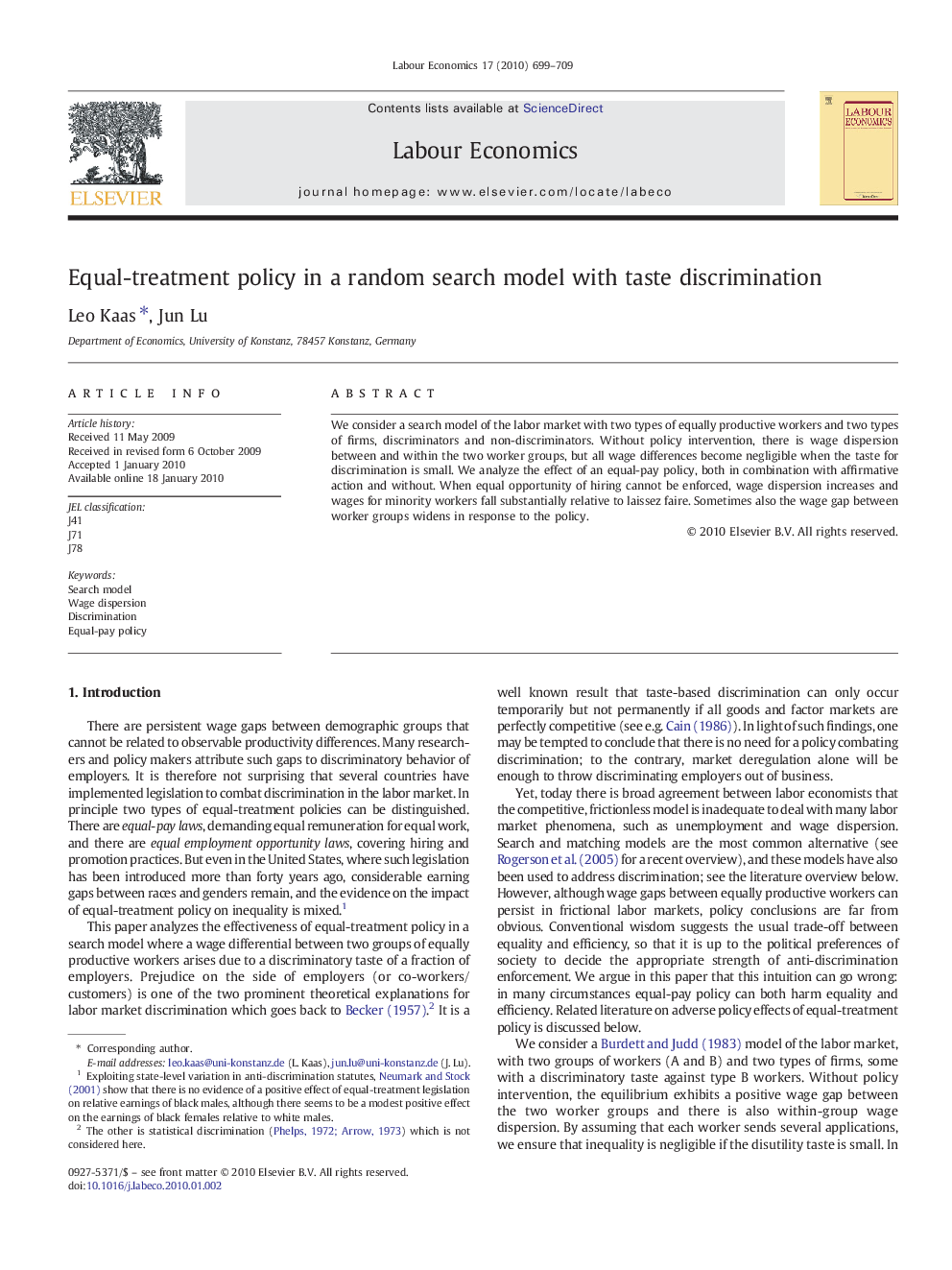| Article ID | Journal | Published Year | Pages | File Type |
|---|---|---|---|---|
| 972433 | Labour Economics | 2010 | 11 Pages |
Abstract
We consider a search model of the labor market with two types of equally productive workers and two types of firms, discriminators and non-discriminators. Without policy intervention, there is wage dispersion between and within the two worker groups, but all wage differences become negligible when the taste for discrimination is small. We analyze the effect of an equal-pay policy, both in combination with affirmative action and without. When equal opportunity of hiring cannot be enforced, wage dispersion increases and wages for minority workers fall substantially relative to laissez faire. Sometimes also the wage gap between worker groups widens in response to the policy.
Keywords
Related Topics
Social Sciences and Humanities
Economics, Econometrics and Finance
Economics and Econometrics
Authors
Leo Kaas, Jun Lu,
